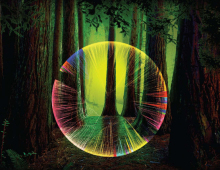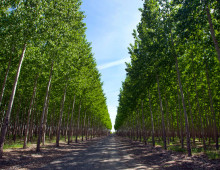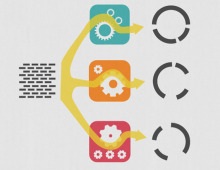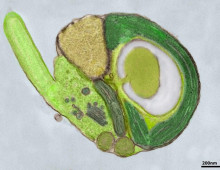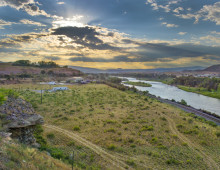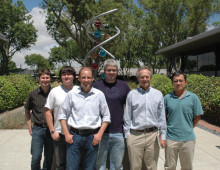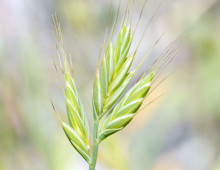“Shipworms were already weird animals, but they just got weirder. The ocean-dwelling clams, which actually look much more like slimy worms, are some of the only creatures in the world that can eat wood. Now scientists have figured out that shipworms are even more unique than we thought…” The Washington Post article was published November 11, 2014. Learn…
Termite of the Sea’s Wood Destruction Strategy Revealed
Directed production of wood-degrading enzymes begins away from the gut The sight of termites anywhere near one’s house is enough to raise a homeowner’s concerns about the potential damage these insects might inflict. Shipbuilders and engineers have similar feelings about shipworms, worm-like wood-eating marine clams that have also been called the “termites of the sea.”…
Discovering the Undiscovered
Advancing New Tools to Fill in the Microbial Tree of Life To paraphrase a famous passage from Coleridge’s “The Rime of the Ancient Mariner”: microbes, microbes everywhere, though most we do not know. This is changing, though. In a perspective piece published November 6 in the journal Science, Eddy Rubin, Director of the U.S. Department…
Mapping water management traits related to panic grass variants
Water availability is often a factor in how variants of plant species evolve. The Science: Researchers statistically mapped regions of the panic grass genome linked to morphological traits such as thriving under scarce (xeric) or moderate (mesic) water availability. The information lends insights into how ecotypes are formed as evolving populations of a species adapt…
Celebrating National Bioenergy Day
In honor of National Bioenergy Day, we thought we’d highlight some of our recent projects that are related to developing plant biomass, as well as agricultural waste and forestry byproducts, to generate heat and energy. Among the plants being considered for biomass crops are eucalyptus trees, which grow in 100 countries and cover over 40…
Automating the Selection Process for a Genome Assembler
A publicly available repository allows genomics researchers to compare multiple assemblers. The Science: A repository of genome assemblers is being developed to automate the process of selecting the best assembler for the task at hand. The Impact: There are many different genome assemblers being introduced and touted. On the nucleotid.es site (http://nucleotid.es/), the test results…
Tracing Ancestral Responses to Light from Algae to Plants
Analysis track origins of algal light sensors to a shared ancestor approximately one billion years ago. The Science: Researchers determined the origin of a group of protein-based light sensors in land plants and a series of related phytoplankton by sequencing and comparing RNA in these genomes. The Impact: Marine phytoplankton are considered responsible for roughly…
2015 DOE JGI’s Science Portfolio Delves Deeper into the Earth’s Data Mine
The U.S. Department of Energy Joint Genome Institute (DOE JGI), a DOE Office of Science user facility, has announced that 32 new projects have been selected for the 2015 Community Science Program (CSP). From sampling Antarctic lakes to Caribbean waters, and from plant root micro-ecosystems, to the subsurface underneath the water table in forested watersheds,…
Training the Next Generation of Talent
New Graduate Internship Program Builds Bridges Between DOE JGI, UC Merced Days after presenting the results of his summer research at the U.S. Department of Energy Joint Genome Institute (DOE JGI), a DOE Office of Science user facility, Keedrian Olmstead was back on campus at the University of California, Merced to start orientation as a…
Going deep to find drought-tolerant genes in Brachy
Many unannotated genes identified through sequencing multiple lines of the model grass. The Science Researchers used deep sequencing to look at whole-genome sequence variation in seven lines of the model grass Brachypodium distachyon and found previously unannotated genes. They also looked at genome-wide gene expression under drought-stress conditions. The Impact Hundreds of genes not present…

